In urban cities around the globe, most people rely on public transport everywhere they go. While it is affordable and usually reliable, it raises concerns. Older infrastructure is not enough to accommodate the needs of urban transportation. New methods that use technology are also necessary to reduce the impact on the environment. Bus services face challenges from multiple fronts. They need to offer efficient and safe services to a much larger urban population, making sure it complies with sustainability.
Smart bus management software and bus fleet management solutions provide an efficient answer to these challenges. By combining real-time bus tracking systems, computerized scheduling, and predictive maintenance, this technology empowers operators to optimize fleets and deliver more reliable service. For today’s bus operators, adopting advanced digital tools is no longer optional. It’s essential for ensuring growth and sustainability.
This blog covers the advantages offered by intelligent bus management software. It illustrates how the innovative tool enables operators to enhance productivity, improve the passenger experience, reduce costs, push compliance, and achieve lasting sustainability. Discover bus management software to see how you can revolutionize your operations.
Importance of Smart Bus Management Software
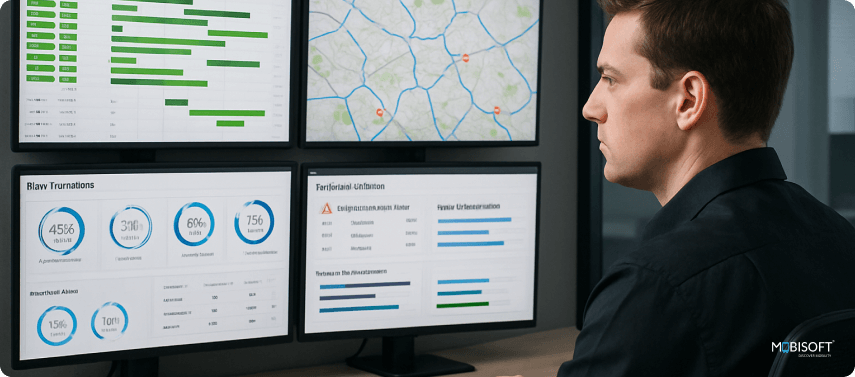
Competition, operational risks, and cybersecurity threats make fleet operations increasingly complex. However, technology can help make these processes simpler, eventually reducing time and effort. Having functionality that revolves around centralized dashboards, real-time tracking, and instantaneous communication, bus operator software solutions allow managers to regulate their fleets on a real-time basis. The addition of IoT and AI-based tools gives predictive analytics, alerts that automate, and fosters decision-making that's proactive.
Learn how transportation management software can help streamline multi-modal transport operations.
Market Growth and Financial Metrics
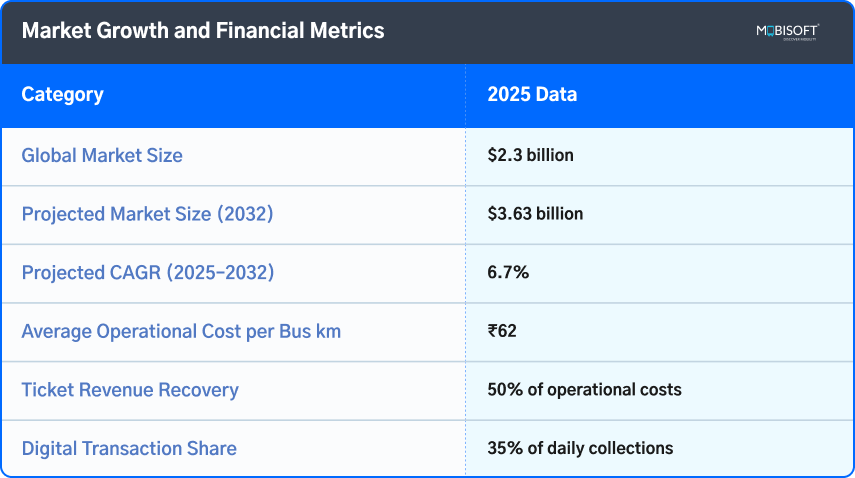
The growing adoption of public transport management software is reflected in market trends. With rising operational costs and demand for efficiency, investment in digital fleet solutions is expected to accelerate.
Enhanced Operational Efficiency
One of the most compelling reasons for the adoption of smart bus management software is the remarkable improvement in operational effectiveness that it provides.
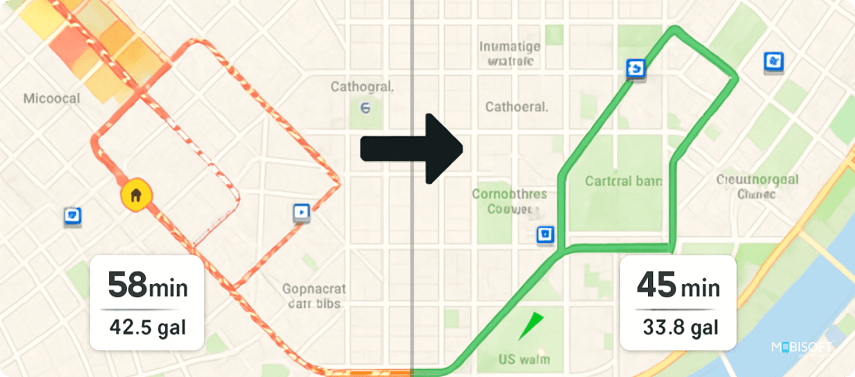
Real-time Bus Tracking and Data Collection
The reason these bus management software systems are called intelligent is that they capture live data, analyzing all the information to make the best possible decisions. Contrary to conventional management systems, which made use of old data and were analytically inefficient compared to the latest versions, they make use of intelligent systems that utilize IoT sensors, telematics, and real-time bus tracking system technologies to gather data consistently.
Automated Scheduling and Routing
Intelligent bus management software searches for routes and traffic in real time, using this information to curate the shortest route possible. This is one of the most important features that helps save time and finances. Cities like London, which have implemented these systems, have seen considerable enhancements in service frequency and timeliness.
Automated scheduling and dispatch improve fleet use by matching buses with passenger demand. These systems examine historical data to predict busy periods and adjust schedules accordingly, functioning as effective automated bus scheduling solutions.
Integration with Public Transport Management Software
Smooth integration with the existing transit infrastructure is the hallmark of success. Today's bus transportation management software is designed to be compatible with existing infrastructure, ensuring minimal disruption to services during the transition. It also promotes more coordination between multiple agencies, such as buses, railways, and ridesharing services, enhancing the overall public transport management software experience.
Predictive Maintenance
Incorporation of predictive maintenance technologies allows the operator to fix problems before they occur. Predictive maintenance becomes possible based on vehicle performance data, helping avoid breakdowns and prolonging fleet life. This keeps buses on the road longer and prevents costly breakdowns, a key benefit of bus fleet management software.
Operational Efficiency Metrics
The transition to smart bus management software has ushered in remarkable improvements in efficiency metrics. Crucial indicators, such as fuel consumption, maintenance costs, and service reliability, show substantial enhancement. With real-time visibility and data insights from bus fleet monitoring software, operators are empowered to realize tangible performance gains.
Data analytics enable the identification of and elimination of wastefulness in routes, fuel, or crew scheduling. These productivity improvements yield significant cost savings. Better operational efficiency becomes financially rewarding to bus companies. Discover the benefits of fleet management software in improving efficiency and reducing costs.
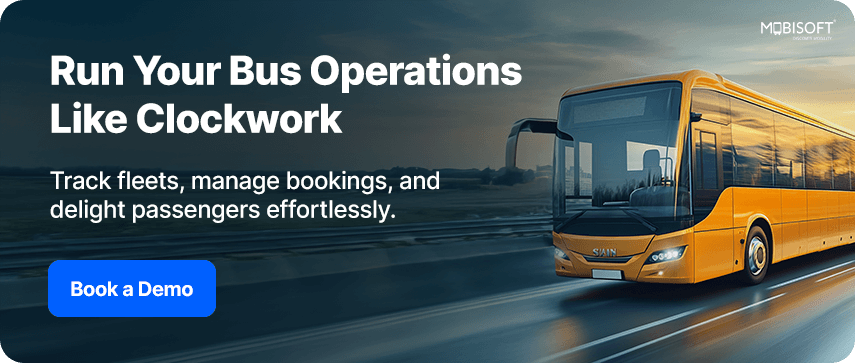
Improved Passenger Experience
With the fast-evolving expectations of customers in today's situation, an improved passenger experience is critically important to bus companies. Smart bus management software is the key to making this a reality.
Real-Time Tracking Features
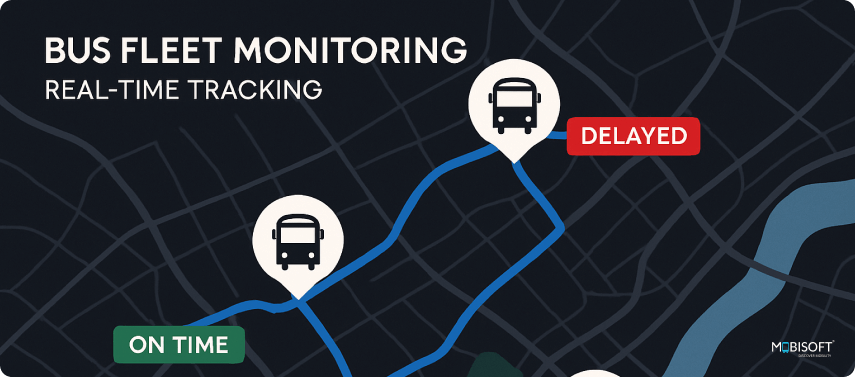
For passengers, the ability to track buses in real time represents a true revolution. Real-time bus tracking system-enabled mobile applications provide travelers with real-time bus arrival information and routing. Such transparency reduces delays and boosts overall satisfaction. Evidence supports the idea that live tracking significantly improves the passenger experience through the provision of accurate arrival measures.
User-Friendly Mobile Applications
Clean UI is central to the success of any application. Simple-to-navigate apps immensely help people, especially the elderly. Passengers can buy and view tickets, check schedules, receive pop-up notifications for important alerts, and track their location. The ability to control everything from a single app results in a comfortable travel experience, enhanced through bus operator software solutions.
Enhanced Communication Channels
Effective communication is essential for ensuring passenger satisfaction. Advanced bus fleet management software enhances the dialogue between transit agencies and riders. It facilitates prompt notifications regarding service disruptions or delays. Additionally, feedback features integrated into apps allow passengers to express concerns and share suggestions. This interaction fosters a sense of community while elevating the quality of service.
Personalization Options
Customized capabilities greatly improve the passenger experience. Selligent systems are also able to provide personal recommendations and reminders based on user preferences, such as preferred routes or travel times. Customization this extensive engenders rider allegiance, making public transport reliable.
Amenities and Comfort
Modern-day commuters expect comforts like Wi-Fi connectivity and charging stations. Advanced bus fleet management solutions can offer these services, improving satisfaction rates. Research suggests that offering these services keeps commuters loyal to public transport.
Upgraded buses, equipped with Wi-Fi, charging stations, and live feeds regarding amenities, reflect the commitment to passenger comfort. They do not merely improve traveling time, but also appeal to younger people who value connectivity as much as they value ease.
Statistical Improvements in Satisfaction
Statistics illustrate the benefit the upgrades provide to passenger satisfaction. In the Spring 2025 customer satisfaction survey, 82 percent of passengers were either fairly or very satisfied with public transport, giving the services a rating of 4 or 5 on a scale of 1 to 5. In autumn 2024, the figure was 83 percent. This increase is due to enhanced reliability, comfort, and ease.
Intelligent bus management software that enhances passenger experience has many advantages. Real-time vehicle tracking, easy-to-use mobile applications, personalized features, and enhanced communication help transit agencies boost satisfaction levels, building trust among passengers.
Maximize your fleet’s efficiency with advanced bus tracking software.
Cost Reductions and Financial Benefits
Fuel Savings through Route Optimization
Integrating smart bus management software generates strong cost savings for transit agencies. Route optimization and idle time are minimized, and fuel consumption experiences a noticeable decrease. Numerous agencies implementing these bus fleet management solutions recognize approximately a 15 percent annual fuel savings. In addition, taking the public bus also generates fewer carbon dioxide emissions, creating economic as well as environmental savings.
Operational Expense Reductions
Operations become more efficient, keeping the cost of operations low. Improved schedule maintenance, fueling, and automation through bus transportation management software keeps overhead low. These savings give bus companies the flexibility to deploy resources. Transport management solutions improve clarity, eliminate wastage, and deliver bottom-line gains.
Labor Cost Savings
Automated scheduling and tracking with automated bus scheduling solutions help lower labor costs. Fewer people working manually enables workers to devote themselves to delivering higher-value services such as technical support. Reductions in labor expense pay special dividends to budget-strapped agencies, allowing them to maintain or even increase service levels.
Return on Investment and Economic Impact
Long-term financial research highlights the stellar return on investment provided by bus fleet management software. Projections indicate that each dollar that goes into public transportation results in about four economic dollars being returned. This highlights the capability of smart bus management software to pay back the expenses incurred and even offer gains on the side.
Revenue Generation through Digital Advertising
In-bus digital signage has twin advantages. It provides the passenger with up-to-date, real-time information while also generating ad income for the operator. Bus operator software solutions seamlessly manage ad placements, adding another source of income for transit agencies.
Measuring Financial Benefits and ROI
Tracking the return on investment (ROI) on bus fleet management software is critical to making informed choices. Agencies track progress in improved operational effectiveness, fuel and maintenance savings, and increased ridership to quantify obvious financial gains. Accurate ROI data supports funding requests for future upgrades.
Government Grants and Financial Support
A number of government initiatives provide grants and rewards that offset the up-front cost of adopting smart bus management software. Financial assistance like this softens the blow of installing new systems for transit agencies.
Savings generated can be reinvested into improving transit services. This may involve enhancing routes, upgrading amenities, or expanding coverage, encouraging continual growth in ridership.
The financial benefits of bus fleet management software are clear and varied. From reducing operational and labor costs to unlocking new revenue opportunities, these systems support the sustainable growth of transit operators.
Learn how a school bus tracking system enhances student safety while improving operational efficiency.
Increased Safety and Compliance
Security and safety are paramount in public transport. Smarter bus management software increases both factors significantly.
Overview of Safety Features
Transit agencies are most concerned about safety issues. Intelligent bus management software offers features like collision avoidance, automatic braking in emergencies, and live monitoring of driver behavior. Agencies employ these high-end technologies to reduce accident probabilities as well as enhance safety performance.
GPS and geofencing technologies, included in bus fleet monitoring software, enable close monitoring of bus speeds and routes. Geofencing sets virtual boundaries, triggering alerts when crossed, controlling speeding and unauthorized route deviations to protect passengers and drivers alike.
Compliance with Regulations
Transit authorities must adhere to federal and local standards of safe practices. bus transportation management software assists authorities in fulfilling such regulations, such as the EU's General Safety Regulation II (GSR2), which requires implementation of further measures of protection. Making use of such technologies helps ensure ongoing compliance while preventing possible sanctions.
Real-Time Monitoring of Driver Behavior
Ongoing driver performance monitoring is essential to safety. Advanced telematics tracks factors like speed, braking, and acceleration, allowing identification of unsafe activities. Agencies that install driver management system technologies have had accident prevention rates up to 30%.
Reduction in Accident Rates
Cities that use smart bus management software have also registered reduced accidents. A Seattle-area transit authority, for instance, saw collision rates fall by 40% within a period of two years after embracing smart bus technologies. Such upgrades improve passenger safety as they also strengthen the public perception of the services.
Improved Emergency Response Times
Intelligent systems improve response to emergencies through the provision of precise bus locations during emergencies. This aids the operator in rapidly sending the emergency services, hence saving lives and minimizing the effects of the accident. Technology, in this way, contributes significantly to safety improvement.
Importance of Data Security
As publicly accessible transport becomes more integrated, data protection becomes an absolute requirement. Protecting passenger information and following the rules of confidentiality is important to secure trust. Advanced bus fleet management software incorporates rigorous protections against unauthorized access.
Staff Training on Safety Technologies
Use of safety technologies necessitates extensive employee training. Both the operators and drivers should be very conversant regarding the new systems. Proper training generates trust in the technology, increases productivity, and reduces resistance.
By including sophisticated safety capabilities, continuous driver monitoring, and expedited emergency response, smart bus management software protects people while ensuring agencies remain compliant. These technologies are now imperative for today's transit operations.
Environmental Sustainability
With increasing climate issues, implementing green practices in public transport is essential. Integration of electric buses reduced emissions by 53.85%, saving about 663 tons of CO₂ per year through citywide surveys and traffic analyses. Smart bus management software helps agencies achieve these results.
Reducing Carbon Emissions
A significant challenge confronting bus operators is environmental sustainability. Bus fleet management software decreases emissions by streamlining routes and lowering fuel usage. Optimizing routes and minimizing idling reduces the total environmental impact.
Integration with Electric and Hybrid Fleets
Smart bus management software is easy to integrate into electric and hybrid bus fleets. It helps agencies keep track of the levels of the battery, the schedules for charging, as well as energy use. It pays attention to the optimum utilization of cleaner energy sources.
Electric buses that are significantly cleaner than gasoline buses complement smart systems. Integrating them aligns sustainability objectives with effective operations.
Scalable and Future-Proof Bus Fleet Management Solutions
Modular design of intelligent bus management software allows operators to tailor implementations, choosing features needed today and adding more later. This prevents investments in technology from becoming outdated.
Tailored Bus Operator Software Solutions
Operators also enjoy the flexibility to select features that fit their current operations. As long as business requirements and passenger demands change, they can add more features. This modularity keeps the technology aligned with fluctuating objectives as well as expansion plans.
Integration with Other Transportation Modes
Intelligent bus management systems also integrate effortlessly with other modes of transport, including ride-hailing and bike-sharing services. It altogether boosts the overall urban mobility. It also makes the use of public transport more appealing as a viable option over a personal vehicle.
Staying Ahead of Technological Trends
As technology evolves rapidly, operators must stay agile. Smart bus management software helps them keep pace with AI and machine learning innovations. The global intelligent transportation system industry is projected to grow from USD 60.4 billion in 2025 to USD 137.8 billion in 2035, growing at a CAGR of 8.6%. Railways lead transport mode shares by 40%, and application leadership is held by traffic control, which commands a 30% share.
Technological Integration and Features
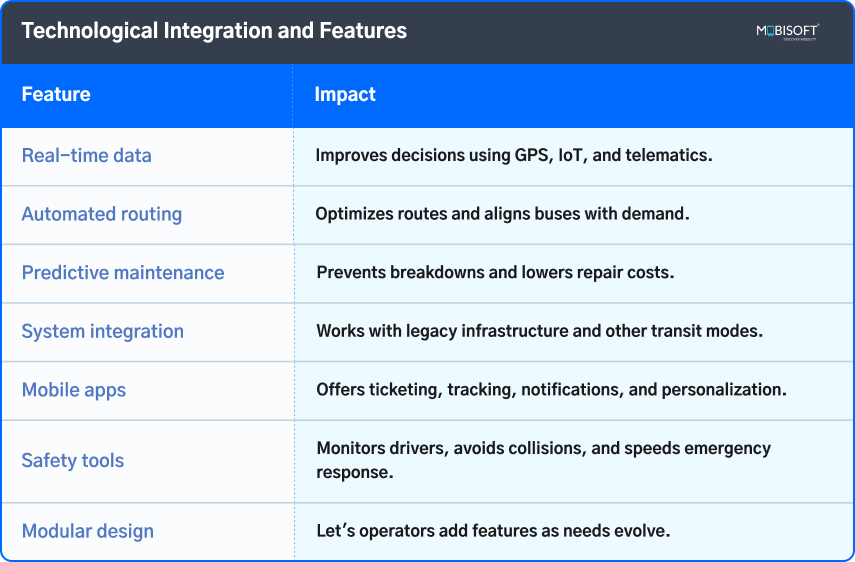
Guidelines to Maximize the Benefits of Bus Management Software
Implementing smart bus management software requires meticulous planning. It is essential to address key factors that will guarantee the system provides long-term value.
Integration Compatibility
It is critical to choose bus operator software solutions compatible with current systems. Without compatibility, data silos or disruptions occur, hindering efficiency. Best-in-class platforms support existing technology, allowing easy transitions and facilitating collaboration among agencies.
Data Security and Privacy
Securing delicate passenger and operational information requires strong measures. Data must be protected through encryption and access controls. Data privacy regulations help build trust among passengers. Advanced bus fleet management software ensures robust security while handling sensitive information.
Staff Training and Adoption
Technology functions successfully only when the people using it are properly prepared. Drivers, dispatchers, and maintenance staff need thorough training. By enhancing their confidence and comprehension, operators ensure the triumph of smart bus management software while reducing resistance.
Ongoing Maintenance and Updates
Intelligent software requires routine maintenance and upgrades to stay secure and efficient. Forethought about maintenance prevents future performance issues. Keeping up allows operators to enjoy the advantage of new capabilities and defenses provided by bus fleet monitoring software.
Change Management and Communication
Implementation of fresh technologies might face resistance from within. Clear communication about benefits and including staff as part of rollout plans helps minimize problems. Pre-involving workers positively influences acceptance and smooth roll-out of bus transportation management software.
Discover how fleet optimization software can help maximize your ROI.
Optimizing Public Transit with Smart Bus Management Software
Intelligent bus management software implements AI to offer an efficient and user-friendly travel experience. With the help of real-time data, it can predict road blocks and traffic, allowing drivers to optimise their routes accordingly. This greatly improves travel time and helps with overall traffic management in the area.
With the rising pressures of urban transit, operators cannot help but turn to smart bus management software to cope with the demands. It is not a choice to invest in smart bus management software, but it guarantees the integrity and future-oriented vision of public transport infrastructure.
The future of public transport will be technology-driven in the coming years. Smart cities will have to streamline passenger experiences, and advanced bus fleet management software will helm the vision and transform urban commutes.
, as the name suggests, provides bus operators, commuters, and cities with significant advantages. It optimizes operations, increases passenger satisfaction, reduces spending, prevents accident hazards, and supports sustainability objectives.
With the increasing demand to support urban transit, it is critical that operators adopt smart bus management software to meet these needs. Investing in high-end bus management software goes beyond preference; it ensures the integrity and forward-thinking nature of public transport infrastructure.
In the years to come, the future of public transport will be shaped by technology. Smart cities need to optimize passenger experiences, and advanced bus fleet management software will lead the vision, revolutionizing urban commutes.
Discover how fleet optimization software can help bus operators save time and revenue.
Key Benefits of Smart Bus Management Software
- Smart bus administration programming allows administrators to lower costs, run more effectively, and improve fleet life through data-informed decisions and predictive repairs.
- Passengers benefit from real-time tracking, easy-to-use apps, and personalized updates, which make travel more reliable and comfortable.
- Improvement of routes and automation lowers fuel usage, reduces labor costs, and yields new streams of income like Internet advertising.
- Safety is enhanced through driver monitoring, geofencing, collision-avoidance systems, and reduced emergency-vehicle-response time.
- Sustainability is made achievable through reduced emissions as well as the incorporation of electric and hybrid fleets of buses.
- Modular and scalable software responds to evolving needs and is integrated into combined transport modes to make systems futureproof.
- Successful implementation depends on compatibility with existing systems, strong data security, staff training, and ongoing updates.
- Investment in intelligent bus management software is more than effectiveness alone; it prepares operators to be at the forefront of cities' futures.
FAQs: Smart Bus Management Software
Q: Why is smart bus management software so necessary for bus operators these days?
A: To operators, it is foundational because it makes buses more efficient, cost-effective, and safe, and helps achieve sustainability objectives.
Q: How does predictive maintenance really work?
A: Sensors and telematics monitor vehicle performance to diagnose faults before they happen. This enables proactive maintenance that shortens downtime, prolongs vehicle life, and reduces repair expenditures. Bus fleet analytics tools assist in this process.
Q: Can timetables and itineraries be optimized dynamically?
A: Yes. With historical patronage data, traffic flow data, and meteorological patterns, the system makes real-time suggestions of the best itineraries and timetables to reduce delays and fuel consumption and increase the reliability of service.
Q: How does it enhance passenger experience beyond real-time tracking?
A: Passengers enjoy mobile ticketing, tailored notifications, service information, and facilities such as Wi-Fi and charging. Feedback options enable passengers to report faults in a feedback loop that operators use to improve services.
Q: Does it assist in lowering operating costs while simultaneously boosting revenue?
A: Route improvement, fuel economy, predictive maintenance, and labor savings reduce the cost of operation. Moreover, offerings such as in-bus digital advertising create new sources of revenue, improving overall return on investment.
Q: How does it enhance compliance and security?
A: It tracks driver activity, prevents detours through geofencing, sends collision notices, and assists in regulatory compliance. This helps minimize accidents, allows compliance with laws, and enables quick action in emergencies.
Q: Is it able to coexist within electric or hybrid bus fleets?
A: In effect, this system follows charge levels, charge schedules, and utilization to achieve optimal efficiency. It assists operators in harmonizing activities with sustainability objectives while retaining reliability.
Q: What challenges of implementation must operators encounter?
A: Staff training, system compatibility from present facilities, managing resistance to change, and information security are top concerns. Focused planning, staged implementation, and comms make adoption easier.
Q: How does it aid instruction?
A: It allows operators to turn on only what is needed in the near term and scale up extra functions later. It accommodates additional mobility offerings like ride-hailing and bike-sharing to allow for later urban transit strategies.
Q: How do operators estimate the effectiveness of these systems?
A: The success is quantified through such parameters as fuel and labor savings, reduced maintenance costs, improved on-time performance, higher satisfaction among passengers, and revenue from value additions such as advertising.
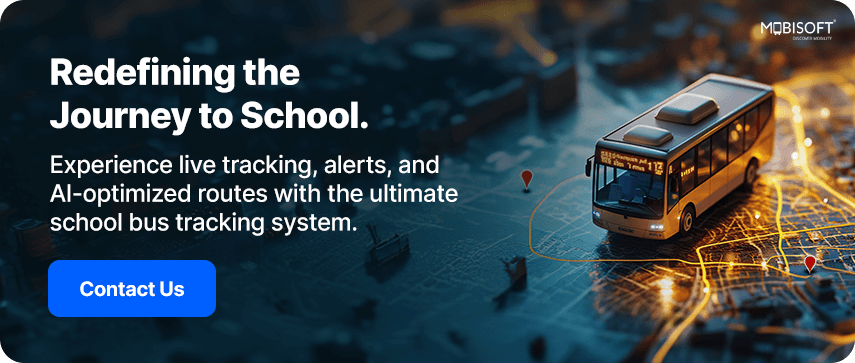

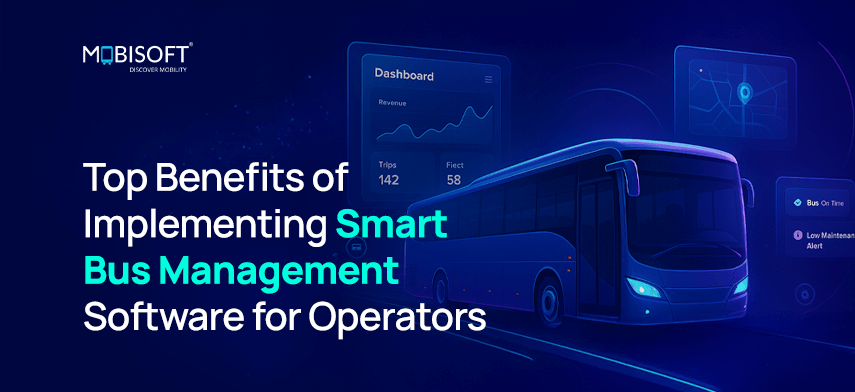


 September 1, 2025
September 1, 2025


